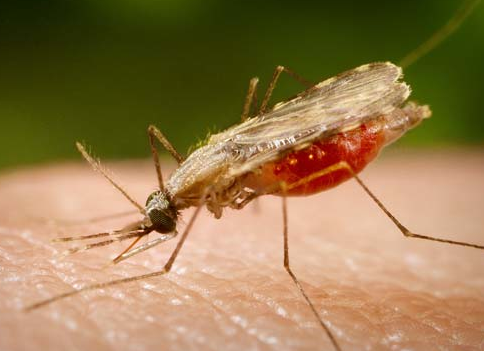
Source: TropIKA.net
Olea europaea Africana: commonly known as the “African Olive,” the endangered species has demonstrated potent anti-malarial activity. [credit: World Agroforestry Centre]
A number of East African plant species identified as being effective in the prevention of malaria symptoms are at risk of extinction, say scientists. Researchers at the World Agroforestry Centre (ICRAF) and the Kenya Medical Research Institute (KEMRI) conducted a detailed assessment of 22 of the region’s malaria-fighting flora, focusing on those species identified by both traditional medicinal practitioners and scientists as promising candidates for future study. the team’s findings have been published in a book, Common Antimalarial Trees and Shrubs of East Africa.
According to researchers, many species of trees in East Africa are at high risk of extinction due to deforestation and over-exploitation for medicinal uses. Scientists in the field have been able to identify at-risk tree species, including those that have antimalarial qualities, by monitoring deforestation in the region and by talking to herbalists and local communities.
In an effort to preserve trees and shrubs with antimalarial qualities, ICRAF is storing samples of at risk species in its genebank while also growing them in plant nurseries at its headquarters in Nairobi. the ICRAF genebank contains close to 200 species, of which at least 30 are known to have antimalarial properties.
The field data were gathered by ICRAF scientists in Kenya, Uganda, and Tanzania, where they met with approximately 180 herbalists and 100 malaria patients in 30 communities. KEMRI supported the process by supplying the information about each plant’s chemical compound make-up—research that is the result of a sophisticated laboratory process developed by KEMRI for testing natural products.
“We’ve only scratched the surface on the potential value of these plants,” says Dr. Geoffrey Rukunga, Director of KEMRI’s Centre for Traditional Medicine and Drug Research and one of the book’s co-authors. “Although widely used by farmers and people in rural communities, most of this information has never been collected in a comprehensive way by researchers. Going forward, I’d like to see more investment and more research on the power of these plants to fight the scourge of malaria and other diseases.”
Quinine, historically one of the most widely used anti-malarials, was derived from the bark of the Cinchona tree in South America. And today’s most-effective frontline therapy for malaria also comes from a plant, the Artemisia annua shrub. yet access to malaria therapies based on artemisinin compounds remains low—around 15 percent in most parts of Africa and well below the World Health Organizations’ 80 percent target.
Malaria still kills some 800,000 people a year, the majority of whom are children under five years of age in sub-Saharan Africa. A lack of access to doctors and drugs leaves many communities in Africa with few alternatives other than looking for natural remedies to address symptoms, including high fever, severe headaches, bone aches, nausea and vomiting.
“We’re not saying that using these medicinal plants is a replacement for common preventive treatments like bed nets or effective medicines like ACT,” says Dr Najma Dharani, an ICRAF consultant research scientist, who led the field research portion of the study. “But we believe that it’s worth learning from communities that have been treating malaria symptoms with plants for hundreds of years. We need to do more research because one of these plants could prove to be the next Artemisia, and we need to do our best to preserve the plants that are going extinct.”
Indeed, due to a lack of data and proper guidance for their sustainable use, plants like the critically-endangered Zanthoxylum chalybeum, commonly known as “Knobwood,” and the African wild olive, Olea europaea Africana, both of which have been associated with significant levels of anti-malarial activity among other health benefits, are being over-exploited.
“Throughout my eight years of research in Africa, I have seen that we have an entire pharmacy in our farms and in our forests,” says Dharani. “We have plants that should be used by scientific companies to develop more options for malaria drugs. And we cannot become complacent and rely on one herb, because we’ve learned that developing resistance is likely.”
In addition to the chemical compound itself, a range of other factors may be associated with a malaria patient’s recovery. yet to date, scientists have struggled to track or replicate indigenous treatment processes—how a healer administers plants and whether he or she does so in combination with other plants.
“While we’ve made scientific progress identifying these compounds over the last few years, the fact is that we may lose these important trees before we’ve had a chance to understand their ability to defend us against malaria,” says Dr. Rukunga. “We need to approach this as an opportunity on multiple fronts: to preserve the biodiversity that may hold the next cure, to strengthen the research done on the ground in communities, and to continue our diligent work testing our natural resources in the lab.”